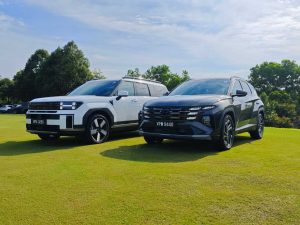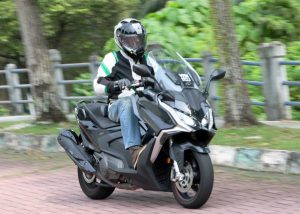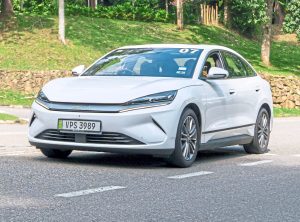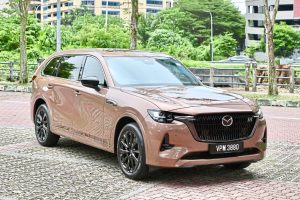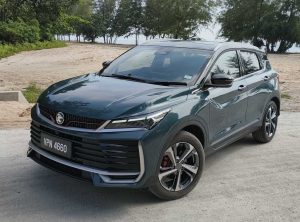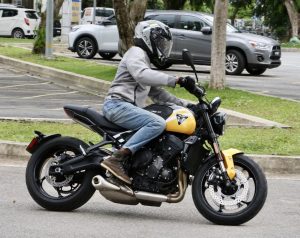Sarawak is currently testing a hydrogen-powered autonomous rapid transit prototype vehicle which can seat up to 300 people. – ZULAZHAR SHEBLEE/The Star
Chang Lih Kang said that with Sarawak already embracing hydrogen vehicles and trams, it was only proper for the peninsula to embark on a similar effort to tap into the clean energy source.
“The peninsula is poised to establish its first hydrogen station next year, alongside the introduction of several hydrogen cars and public buses.
“Once the first hydrogen refuelling station is operational, we will introduce multiple hydrogen vehicles for trial runs and deploy public buses powered by hydrogen,” he told The Star.
He said the first hydrogen refuelling station was a collaboration between the government and Gentari Sdn Bhd, a Petronas subsidiary focusing on clean energy solutions.
The ministry has invested RM12mil in this initiative. The construction of this groundbreaking energy infrastructure reflects the government’s commitment to promoting sustainable and innovative energy solutions, positioning Malaysia as a frontrunner in the transition towards cleaner and more eco-friendly transportation options for the future,” he said.
Chang said the importance of empowering Malaysia’s hydrogen-based energy ecosystem would align with the national hydrogen agenda, which would be outlined in the upcoming Hydrogen Economy and Technology Roadmap 2022-2050 (HETR).
“Prime Minister Datuk Seri Anwar (Ibrahim) is set to launch HETR and the National Energy Transition Roadmap (NETR) in October,” he said.

Chang (left) on a working visit to Petros Multifuel Station operated by SEDC Energy to see the progress of the Integrated Hydrogen Refuelling Station. — Photo courtesy of Chang’s Facebook page
HETR is structured into three phases – with the short-term phase covering the 12th and 13th Malaysia Plans from 2022 to 2030, the medium-term phase (14th and 15th Malaysia Plans from 2031 to 2040) and the long-term phase (16th and 17th Malaysia Plans from 2041 to 2050).
Explaining the rationale behind Malaysia’s simultaneous focus on EVs and hydrogen-powered cars, Chang said the EV usage rate was not ideal, mainly due to charging and pricing concerns.
“Therefore, the government is dedicated to the collaborative efforts of the public and private sectors, which will play a key role in achieving the nation’s target of establishing 10,000 hydrogen refuelling stations across Malaysia by 2025,” he said.
Chang said lithium-ion batteries in EVs had their environmental impacts despite gaining more normalisation among consumers.
“Hydrogen vehicles are gaining momentum, so while Malaysia continues developing EV technology, it does not deter the government’s strategic approach to growing green vehicles and fostering a sustainable and environmentally friendly transportation landscape in Malaysia,” he said.
Chang added that HETR would propel the national energy sector and foster a hydrogen economy in Malaysia, generating a national income of up to RM12.1bil.
“HETR will ensure that the hydrogen sector contributes between RM49bil and RM61bil to the country’s gross domestic product (GDP) and create 45,000 job opportunities by 2030,” he said.
Chang said the ministry also aspired for Malaysia to become a green hydrogen exporter.
He said Phase 1 of NETR, unveiled by Anwar on July 27, introduced six crucial energy transition levers – energy efficiency; renewable energy; hydrogen; bioenergy; green mobility; and carbon capture, utilisation and storage.
This initial phase brought forth 10 flagship “catalyst projects and initiatives” to unlock energy transition investments ranging from RM435bil to RM1.85 trillion by 2050.
He said the committed investments for Phase 1 reached RM25bil, promising to generate 23,000 high-impact, high-quality jobs and reduce annual carbon dioxide equivalent emissions by 10,000 gigagrams.
Chang said the nation was gearing up for NETR Phase 2, highlighting critical areas such as biomass utilisation, waste-to-energy solutions, carbon capture and storage, and hydrogen integration.“This extension aims to delve deeper into actionable items across various sectors, going beyond policy discussions to map a concrete path towards achieving the ambitious 2050 targets.”
Chang said the ministry was committed to making hydrogen a renewable energy source for electricity generation with a pilot project in a rural Orang Asli village.
“Due to the initial high costs, the project will start with powering multipurpose halls or clinics and not the entire village,” he said.With the government’s plan to gradually replace blanket fuel subsidies with targeted subsidies, he said developing and normalising green energy vehicles was the way forward.
According to the ministry’s projection, RON95 will cost RM2.75 per litre in 2030, RM4.02 in 2040 and RM5.54 in 2050 when subsidies are removed.
“In contrast, the price of green hydrogen per litre could be around RM5.22 in 2030. And when the technology matures, and usage expands by 2050, the price could go down further to RM3.50 per litre,” he said. — KHOO GEK SAN and ALLISON LAI

